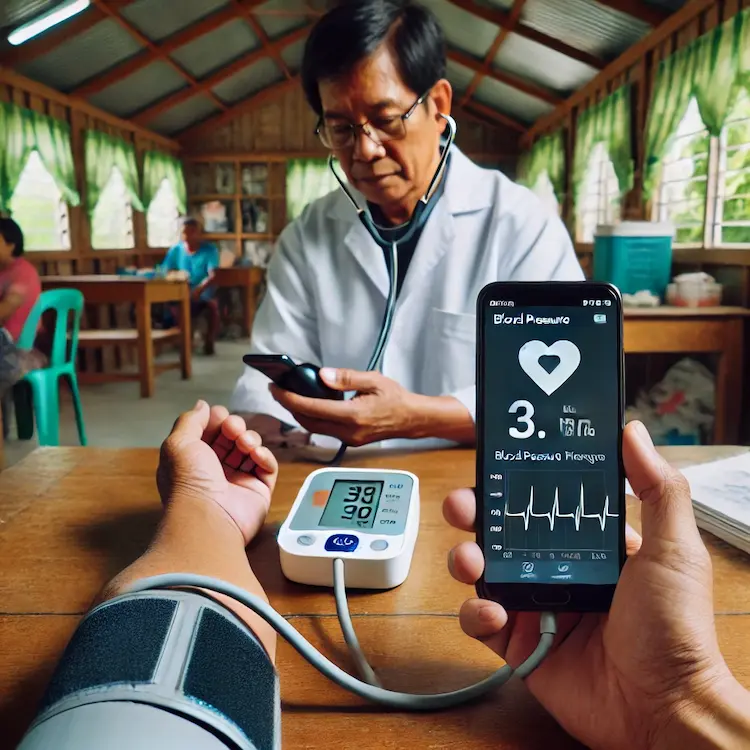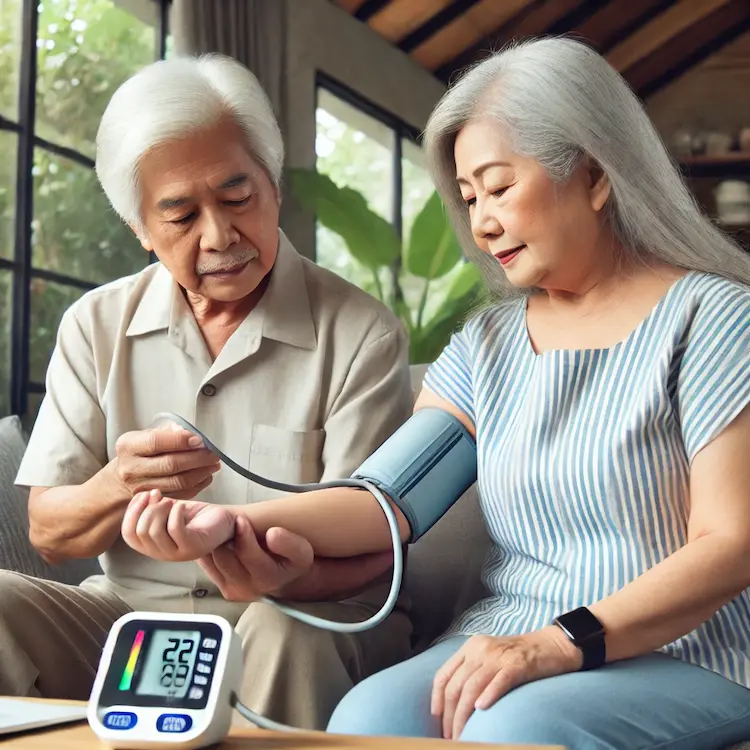Hypertension, commonly known as high blood pressure, is a leading cause of cardiovascular diseases worldwide. In The Philippines, where cardiovascular diseases account for nearly 35% of all deaths, innovative sphygmomanometers have revolutionized hypertension management. With advancements in technology, modern blood pressure monitors now offer higher accuracy, ease of use, and integration with digital health platforms. This article explores the benefits of sphygmomanometer innovations, their impact on public health, and how they contribute to better hypertension management in The Philippines.
Importance of Sphygmomanometer Innovations in Hypertension Management
The early detection and management of hypertension are crucial in preventing complications such as stroke, heart failure, and kidney disease. Traditional mercury sphygmomanometers, though accurate, have been largely replaced due to environmental concerns and the global phase-out of mercury-based devices. Modern oscillometric sphygmomanometers and automated digital monitors now dominate the market, offering non-invasive, user-friendly, and clinically validated solutions.

Key Benefits of Innovation in Blood Pressure Monitors
Greater Accuracy and Consistency
- Modern sphygmomanometers use advanced algorithms and improved sensor technology to provide more accurate and consistent readings. Devices like oscillometric blood pressure monitors eliminate observer bias, reducing human error that was common in manual sphygmomanometers.
Ease of Use and Accessibility
- The shift toward digital automatic sphygmomanometers makes blood pressure monitoring accessible to non-medical users. Devices now come with pre-set cuff inflation, automatic deflation, and large digital displays, making them ideal for home use.
Integration with Mobile and Telemedicine Technologies
- Many modern smart blood pressure monitors now connect to mobile apps and telehealth platforms, allowing patients to:
-
- Track their blood pressure trends over time.
- Share data with healthcare providers remotely.
- Receive real-time alerts for abnormal readings.
Cost-Effectiveness and Wider Availability
As wearable BP monitors and AI-powered sphygmomanometers gain popularity, costs have become more affordable. Local pharmacies and online marketplaces in The Philippines now offer FDA-approved digital BP monitors at competitive prices.
Better Hypertension Awareness and Control
Government and private healthcare initiatives in The Philippines emphasize self-monitoring blood pressure at home (SMBP) as a critical strategy to improve hypertension management. Regular BP monitoring leads to better treatment adherence and early intervention.
Comparing Different Blood Pressure Monitoring Methods
Below is a comparison of different blood pressure measurement methods used today:
| Method |
Accuracy |
Ease of Use |
Cost |
Ideal For |
| Mercury Sphygmomanometer |
High |
Requires training |
Moderate |
Hospitals, Clinics |
| Aneroid Sphygmomanometer |
Moderate |
Requires training |
Low |
Healthcare professionals |
| Oscillometric Digital Monitor |
High |
Easy |
Affordable |
Home users, Clinics |
| Wrist BP Monitor |
Moderate |
Very Easy |
Moderate |
Travelers, Home use |
| Wearable BP Devices |
Moderate |
Very Easy |
High |
Continuous monitoring |
Impact of Hypertension Innovations in The Philippines
Economic and Healthcare Implications
- Reduced Hospital Admissions: Early hypertension detection through home monitoring reduces the need for emergency interventions.
- Lower Healthcare Costs: Patients who manage their BP at home have fewer doctor visits, leading to lower medical expenses.
- Improved Work Productivity: Hypertension-related sick leaves cost The Philippines’ workforce millions annually. Regular monitoring helps employees maintain better health.
Societal and Cultural Considerations
- Rising Awareness: Campaigns like the Philippine Heart Association’s ‘May Measurement Month’ promote early detection.
- Urban vs. Rural Access: Digital BP monitors provide rural communities with improved access to hypertension screening, addressing gaps in healthcare services.
Practical Tips for Managing Hypertension in The Philippines
- Monitor Blood Pressure Regularly: Invest in a clinically validated digital BP monitor for home use.
- Adopt a Heart-Healthy Diet: Reduce salt intake, eat more fruits and vegetables, and avoid processed foods.
- Engage in Regular Physical Activity: At least 30 minutes of exercise, five days a week, helps maintain normal BP levels.
- Limit Alcohol and Tobacco Use: Smoking and excessive alcohol consumption significantly increase hypertension risk.
- Stay Hydrated and Manage Stress: Proper hydration and stress-reduction techniques like yoga or meditation improve blood pressure control.
- Follow Medical Advice: Take prescribed medications consistently and consult a doctor regularly.

Conclusion
The evolution of sphygmomanometers has significantly improved hypertension detection and management. The shift from manual mercury-based devices to automated digital monitors has made blood pressure tracking more accurate, accessible, and user-friendly. In The Philippines, where hypertension is a growing health concern, these innovations empower individuals to take control of their health, ultimately reducing the burden on the healthcare system.
Key Takeaways
- Modern BP monitors provide greater accuracy, ease of use, and better hypertension control.
- The Philippines is adopting telehealth-integrated BP monitoring for better healthcare access.
- Self-monitoring of blood pressure (SMBP) helps in early detection and cost-effective management.
- Smart sphygmomanometer innovations and wearable BP monitors improve long-term hypertension tracking.
Actionable Recommendations
- Invest in an FDA-approved digital blood pressure monitor for home use.
- Use mobile apps to track BP readings and share them with your doctor.
- Join local hypertension awareness programs to stay informed on new developments.
- Encourage family members, especially seniors, to monitor their BP regularly.

